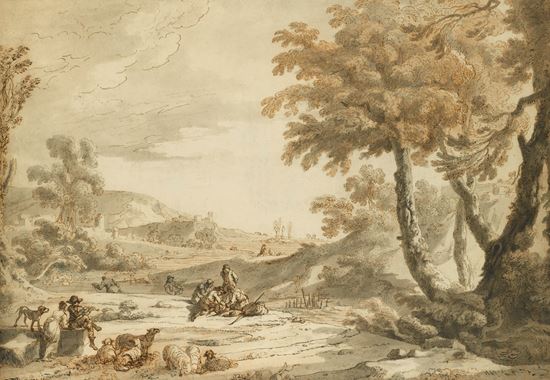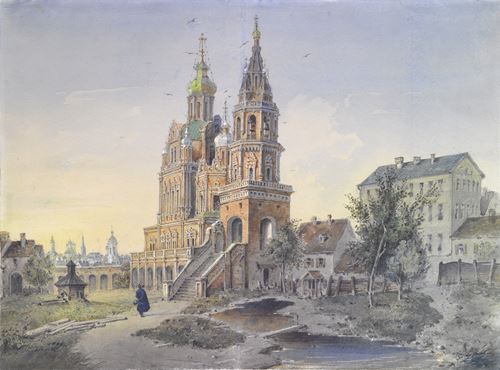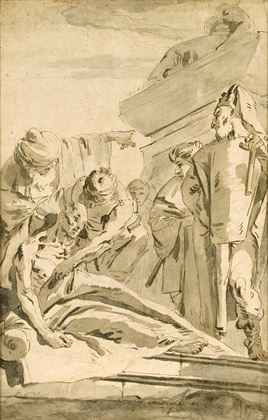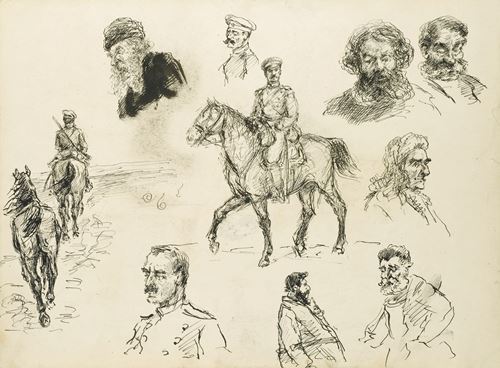ttributed to Antonio Zucchi
(Venice 1726 - Rome 1795)
Landscape Animated with Musicians, Shepherds and Fishermen
quill and brown ink with grey and brown wash
46 x 67 cm (18⅛ x 26⅜ in)
Under a vast summer sky, the rural scene laid out beneath seems the embodiment of easy tranquillity. The towering trees on the right-hand side of the composition dominate the landscape but also provide welcome penumbra for the dwarfed humans who idle beneath their boughs. With the exception of the two men casting their fishing nets by the river, which runs through the landscape, the figures are clustered together in groups of two or more. The viewer’s eye is drawn in a sweeping curve first to the group of four in the centre of the composition and then to the charming couple watched over by an inquisitive dog as they sit together on a rocky ledge.
One languidly plays a flute-like instrument while the girl leans over eagerly to hear him play and a flock of sheep stand lazily by. There is a distinctly amorous overtone to the whole vignette. The artist’s careful clustering of the figures opens up an enormous vista for the viewer and the delicate contour accents, accomplished by skilled chiaroscuro, contributes to an overall atmosphere of mellow calm.
The present work, which is attributed to Antonio Zucchi, recalls, in both the composition of the figures, and exploitation of light and shade, works such as Zucchi’s Classical Ruins with Figures.
Antonio Zucchi was the brother of Giuseppe Carlo Zucchi and studied first with Francesco Fontebasso and then with Jacopo Amigoni, who exerted upon him a profound influence. A number of his early works displayed clear signs of Amigoni’s artistic style and hazy colouring notably in Male Saints Surrounded by Female Franciscan Saints (untraced). His Fourteen Stations of the Cross (1750, Venice, S. Giobbe) also shows Amigoni’s influence as well as a willing acceptance of Francesco Guardi’s innovations. In 1756 Antonio was elected a member of the Accademia di Pittura e Scultora in Venice, and from the evidence of two canvases depicting angels, it is clear that he began to develop a more academic style which imbued his figures with a greater plasticity. He undertook several study trips, probably after 1759, in the company of Robert Adam to Rome and Naples, where he gained a deeper knowledge of the Neo-classical style propounded by Adam.
He settled in Rome in 1766 from where he sent the altarpiece depicting the Incredulity of Thomas for the church of S. Tomà, Venice (in situ). In that same year he journeyed to London to visit Adam and where he exhibited his work in 1771. Two years later, he had painted five frescoes for Home House in London in collaboration with Adam who had designed the building. Zucchi worked on the decoration of other large houses and in 1781 married the artist Angelica Kauffman. In 1784 he was elected a member of the Royal Academy.
Under a vast summer sky, the rural scene laid out beneath seems the embodiment of easy tranquillity. The towering trees on the right-hand side of the composition dominate the landscape but also provide welcome penumbra for the dwarfed humans who idle beneath their boughs. With the exception of the two men casting their fishing nets by the river, which runs through the landscape, the figures are clustered together in groups of two or more. The viewer’s eye is drawn in a sweeping curve first to the group of four in the centre of the composition and then to the charming couple watched over by an inquisitive dog as they sit together on a rocky ledge.
One languidly plays a flute-like instrument while the girl leans over eagerly to hear him play and a flock of sheep stand lazily by. There is a distinctly amorous overtone to the whole vignette. The artist’s careful clustering of the figures opens up an enormous vista for the viewer and the delicate contour accents, accomplished by skilled chiaroscuro, contributes to an overall atmosphere of mellow calm.
The present work, which is attributed to Antonio Zucchi, recalls, in both the composition of the figures, and exploitation of light and shade, works such as Zucchi’s Classical Ruins with Figures.
Antonio Zucchi was the brother of Giuseppe Carlo Zucchi and studied first with Francesco Fontebasso and then with Jacopo Amigoni, who exerted upon him a profound influence. A number of his early works displayed clear signs of Amigoni’s artistic style and hazy colouring notably in Male Saints Surrounded by Female Franciscan Saints (untraced). His Fourteen Stations of the Cross (1750, Venice, S. Giobbe) also shows Amigoni’s influence as well as a willing acceptance of Francesco Guardi’s innovations. In 1756 Antonio was elected a member of the Accademia di Pittura e Scultora in Venice, and from the evidence of two canvases depicting angels, it is clear that he began to develop a more academic style which imbued his figures with a greater plasticity. He undertook several study trips, probably after 1759, in the company of Robert Adam to Rome and Naples, where he gained a deeper knowledge of the Neo-classical style propounded by Adam.
He settled in Rome in 1766 from where he sent the altarpiece depicting the Incredulity of Thomas for the church of S. Tomà, Venice (in situ). In that same year he journeyed to London to visit Adam and where he exhibited his work in 1771. Two years later, he had painted five frescoes for Home House in London in collaboration with Adam who had designed the building. Zucchi worked on the decoration of other large houses and in 1781 married the artist Angelica Kauffman. In 1784 he was elected a member of the Royal Academy.




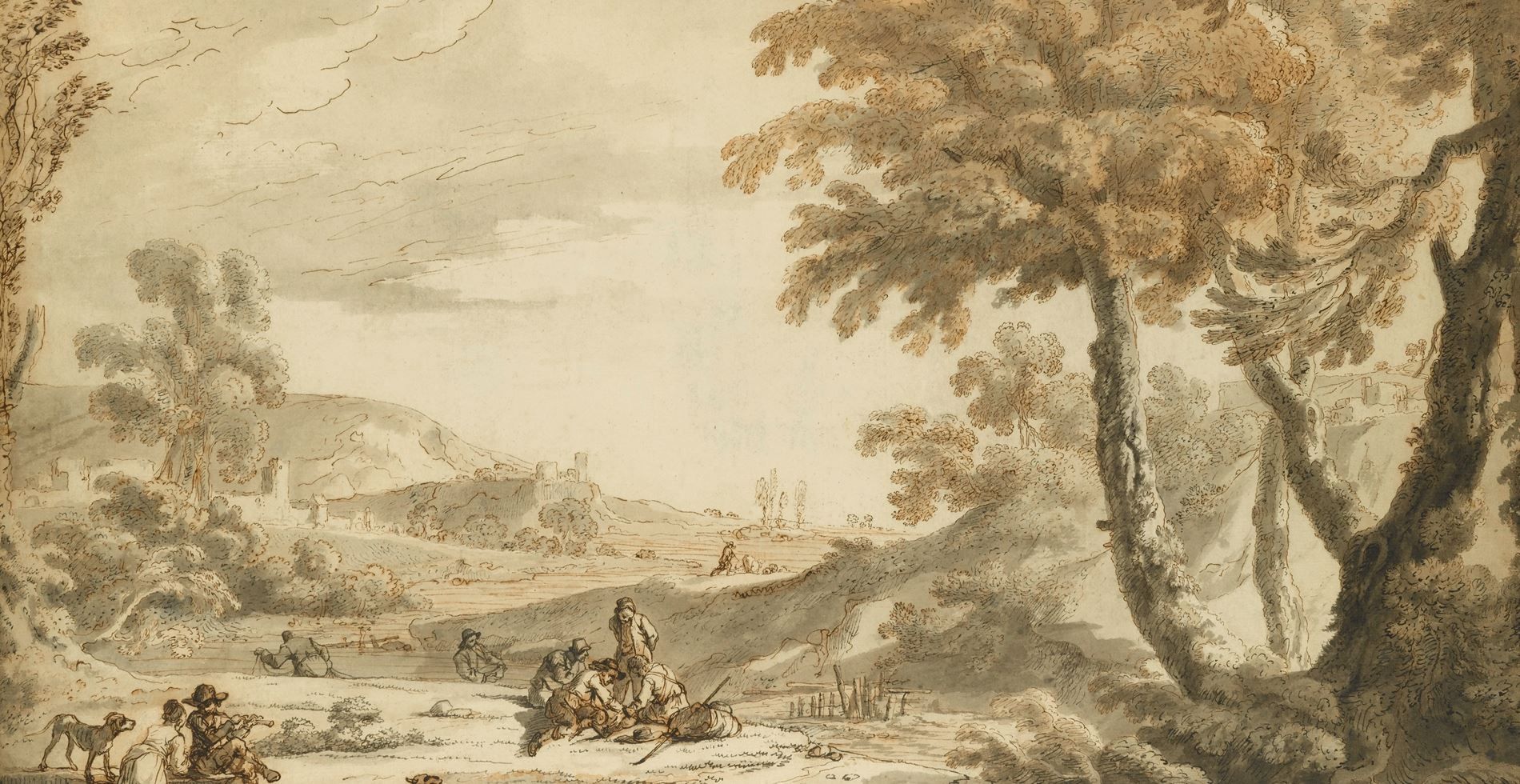
 contact
contact +44 20 7313 8040
+44 20 7313 8040


